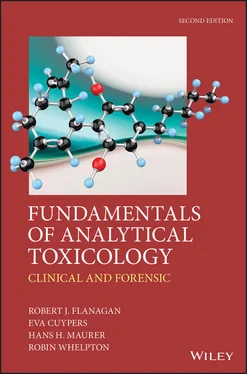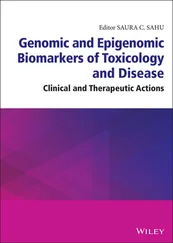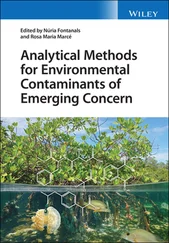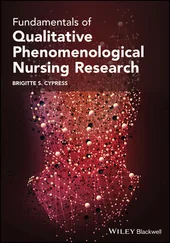2.3.8 Cerebrospinal fluid
CSF collected via needle aspiration is sometimes used to assess exposure to centrally acting drugs (Shen et al ., 2004), and may be submitted for analysis if a possible drug administration error is under investigation. As with vitreous humour and synovial fluid, CSF is normally within a relatively protected environment, and thus may also provide a valuable sample for corroborative ethanol measurement, for example, in the event that other samples are not available (Tominaga et al ., 2015).
Vitreous humour can sometimes be obtained even if a corpse has been extensively burnt or damaged, if putrefaction is beginning to occur, or if samples such as urine are not available (Arora et al., 2016; Metushi et al ., 2016). This specimen may be especially useful when investigating diabetes-related deaths and assessing other parameters such as renal function (Belsey & Flanagan 2016). It can also be valuable for the analysis of alcohols, digoxin, lithium, and some other compounds such as insulin analogues (Ojanperä et al ., 2013). Vitreous humour glucose falls rapidly after death and potassium increases even with careful sample collection and such measurements must be interpreted with due caution (Belsey & Flanagan, 2016).
Vitreous humour is essentially a salt solution with very little protein, and thus any poisons or metabolites present can often be extracted as though they were in solution in buffer. Samples should be collected from each eye separately if possible, and sodium fluoride preservative (2 % w/v) added to one sample. Care must be taken during sampling because use of excessive suction can cause a significant change in the concentration of certain analytes and there is always the possibility of post-mortem change (Dinis-Oliviera et al ., 2017). The presence of concurrent vitreous disease may also be a factor (Parsons et al ., 2003).
Synovial fluid collected via needle aspiration has been used, for example, to assess the uptake of non-steroidal inflammatory drugs into their likely site of action (Day et al ., 1999). As with CSF and vitreous humour, collection of synovial fluid may also be helpful in the event of traumatic death or extensive decomposition because it is located in a relatively protected environment.
As with synovial fluid, pericardial fluid is normally within a relatively protected environment, and thus may also provide a valuable sample for drug screening or for corroborative ethanol measurement, for example, in the event that other samples are not available (Maeda et al ., 2006; Tominaga et al ., 2013; 2015).
2.3.12 Intraosseous fluid
Intraosseous fluid has also been suggested as a further specimen that may be useful if there has been extensive trauma, for example (Rodda et al ., 2018).
Liver is easily collected post-mortem and readily homogenized. It may contain large amounts of drugs and metabolites, and may be the primary specimen submitted for analysis if blood is not available. A portion (10–20 g) of unpreserved wet tissue should be collected. The sample should be taken from the right lobe, if possible, to reduce the risk of contamination with bile and because any diffusion of poison from the stomach is less likely than in the left lobe. An analysis may, in some cases, help to establish whether either acute, or chronic exposure has occurred, but sometimes the analysis can do little more than establish exposure in the absence of reliable information to aid in the interpretation of quantitative results (Section 22.3.2).
Bile tends to contain higher concentrations of drugs and metabolites than other body fluids and thus can be a useful specimen if blood and urine are not available, or if ingestion of a very potent poison is suspected (Bévalot et al ., 2016; Tominaga et al ., 2016). Blood and bile concentrations are generally poorly correlated (Ferner & Aronson, 2018). At autopsy, bile can usually be collected by syringe aspiration from the gallbladder, or by incision-compression if the bile is too viscous. In the event of cholecystectomy, sampling can be performed directly in the common bile duct. The site of sampling should be recorded. Care should be taken to avoid contamination of the specimen by stomach or intestinal contents.
Other tissue samples may be useful when investigating deaths where volatile substances such as solvents or gases are implicated. Brain, subcutaneous fat, lung (apex), spleen, and kidney are the most useful; 10–20 g wet weight of unpreserved tissue should be collected into separate containers. The specimen should be placed in a specimen jar or nylon bag (VSA- or anaesthetic-related deaths), taking care not to overfill sample containers, and stored at –20 °C or below prior to and during transport to the laboratory.
Measurement of brain concentrations of certain poisons may be useful in specific instances, for example such measurements are said to be helpful when investigating possible cocaine-related deaths. Spleen is rich in erythrocytes and hence may provide a valuable alternative specimen in which to measure carboxyhaemoglobin saturation if blood is not available (Vreman et al., 2006).
Analysis of blowfly ( Calliphora vicina ) and other insect larvae that feed on rotting flesh may facilitate detection of many drugs originally present in human or animal tissues, although quantitative extrapolations are unreliable (Introna et al ., 2001; Tracqui et al ., 2004; da Silva et al., 2017). Pupae may be preserved for years, but drug and metabolite concentrations in post-feeding and pupating larvae are much lower than in feeding larvae, suggesting that the larvae metabolize and eliminate drugs during development. Metabolism of nordazepam to oxazepam by blowfly larvae has been observed (Pien et al ., 2004).
2.3.17 Keratinaceous tissues (hair and nail)
Hair and nail may be useful for detecting exposure to poisons that may have been eliminated from other commonly sampled fluids and tissues before the hair sample was collected (Section 18.5). Hair may also survive longer after burial than other tissues. If a single exposure to a poison is suspected, as in drug-facilitated sexual assault (DFSA, date rape), but the suspected agent is not detected in blood or urine, waiting for 1–2 months for head hair to grow and then performing segmental analysis may reveal the presence of the drug (head hair on average grows at the rate of 1 cm per month).
Head hair (a bunch of hairs the thickness of a pencil, ca . 100–200 hairs) should be either plucked in the case of a deceased person, or tied at the root end with cotton thread and then cut ca . 2 mm from the scalp at the vertex posterior (crown) of the head ( Box 2.3; Figure 2.2), making sure the scissors are level with the scalp and not at an angle. Tying with thread helps preserve the alignment necessary for segmental analysis. The sample should be laid aligned in aluminium foil, with the proximal end clearly identified. Pubic or axillary hair may be substituted if no head hair remains, or if the head hair has been excessively bleached or permed, which tends to destroy sequestered drug, but the ability to perform segmental analysis is lost.
Box 2.3Protocol for collection of head hair for testing for drug exposure
Читать дальше












